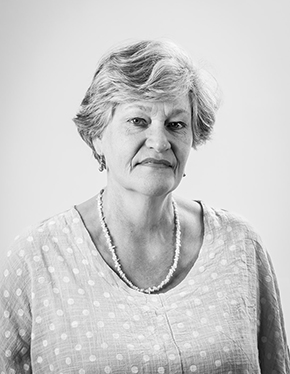The Golden Age of Detective Fiction is generally considered to have spanned the period between the two World Wars, roughly from the early 1920s to the late 1930s or early 1940s. This era is renowned for its complex, puzzle-like mystery novels which often featured an amateur detective and a closed circle of suspects. It was during this time that many of the genre's most famous authors, such as Agatha Christie, Dorothy L. Sayers and G.K. Chesterton, were at their most prolific and influential.
The Detection Club
It was also during this period that the Detection Club was created. Established in 1930 by a coterie of eminent (mostly) British detective fiction authors, the Detection Club codified many of the principles that underpinned the 'golden age of detective fiction'. Membership to the Detection Club was contingent upon an intriguing pledge:
"Do you promise that your detectives shall well and truly detect the crimes presented to them using those wits which it may please you to bestow upon them and not placing reliance on nor making use of Divine Revelation, Feminine Intuition, Mumbo Jumbo, Jiggery-Pokery, Coincidence, or Act of God?"
The Country House and beyond
Often perceived as a 'cosy' chapter in the crime literature canon, not least when compared to its US 'hardboiled' counterpart, the Golden Age of Detective Fiction is in fact hugely important in the evolution of genre fiction. Although at risk of lazy stereotyping for its often idyllic country house settings, genteel amateur detectives (predominantly male) and an overarching milieu of middle-to-upper-middle-class society, the richness and diversity of the works published under the umbrella of this "golden age" have often stood the test of time. Indeed, many previously forgotten authors from this era have enjoyed a renaissance of interest in recent years, some being reproduced by the British Library for an ever-growing crime fiction fanbase.
Detective Fiction at Forum Auctions
Contact us
Golden Age of Detective Fiction First Editions
First editions from the Golden Age of Crime Fiction can vary in scarcity and value considerably. Many of the first editions by the most famous authors of this time if in dust-jackets can be worth several thousand pounds. However, there are also plenty of more obscure but extremely scarce titles which are the real thrill for detective fiction collectors. Add to this jacket artwork that was often to kill for and you can see why this is a hugely popular subgenre of modern first editions, often achieving very high prices at auction. Thankfully there are a variety of entry levels for collectors of all budgets, as well as sub-subgenres to allow for a more nuanced approach to collecting first editions of this sort.
Below we consider some of our favourite rare Golden Age crime thrillers to come up at auction, which we hope showcase the diversity and collectability of this aspect of Detective Fiction in today's rare books market.
Margery Allingham, Dancers in Mourning, first edition, 1937. Sold for £530.Classic Golden Age crime caper, set in the world of theatre and combining intricate plotting with multiple suspects and red herrings. An Albert Campion novel.
READ MORE
Anthony Berkeley, Not to be Taken, first edition, 1938. Sold for £560.
Poison and puzzle make this a great example of a Golden Age tale, by one of the key founders of the Detection Club.
READ MORE
John Dickson Carr, It Walks By Night, first edition, 1930. Sold for £1,250.
A scarce GA first edition, by the only American to serve as the Detection Club's president.
READ MORE
G.K. Chesterton, The Scandal of Father Brown, first edition, 1935. Sold for £525.
More puzzles power the plots of this collection of stories, lifted by a moral and spiritual dimension.
READ MORE
Agatha Christie, The Murder of Roger Ackroyd, first edition, 1926. Sold for £6,875.
Both a key Christie title and an important landmark in the history of detective fiction. A Haycraft-Queen Cornerstone with an entertaining and controversial twist.
READ MORE
Agatha Christie, Lord Edgware Dies, first edition, 1933. Sold for £15,000.
Extremely scarce Poirot novel in jacket, a great closed-circle whodunit from the Queen of Crime.
READ MORE
Edmund Crispin, The Moving Toyshop. A Detective Story, first edition, 1946. Sold for £375.
An attractive copy of this classic work of detective fiction, dedicated to Philip Larkin, The Moving Toyshop provided the inspiration for the merry-go-round dénouement of Hitchcock's Strangers on a Train.
READ MORE
E.C.R. Lorac, Still Waters, first edition, presentation copy inscribed by the author, 1949. Sold for £1,200.
Another Golden Age puzzler, in a typical English rural setting. Inscribed by the author in the style of her protagonist.
READ MORE
Dorothy L. Sayers, The Unpleasantness at the Bellona Club, first edition, 1928. Sold for £940.
The fourth of Sayers' Lord Peter Wimsey novels, scarce in such good condition.
READ MORE
Josephine Tey, Miss Pym Disposes, first edition, 1946. Sold for £240.
An important author, straddling the Golden Age and the more modern era of crime writing. Her second novel.
READ MORE
For more information on Golden Age Detective Fiction, or Detective Fiction more broadly, contact our resident specialist book sleuth Max Hasler.
Experts



.jpeg)

.jpeg)
.jpeg)
.jpeg)




.jpeg)



.jpeg)
.jpeg)


.jpeg)




